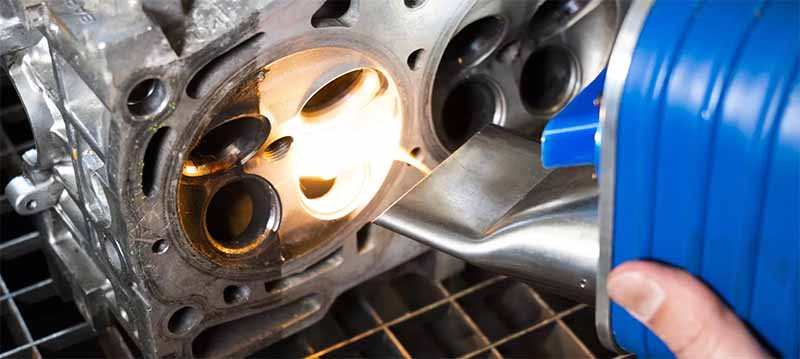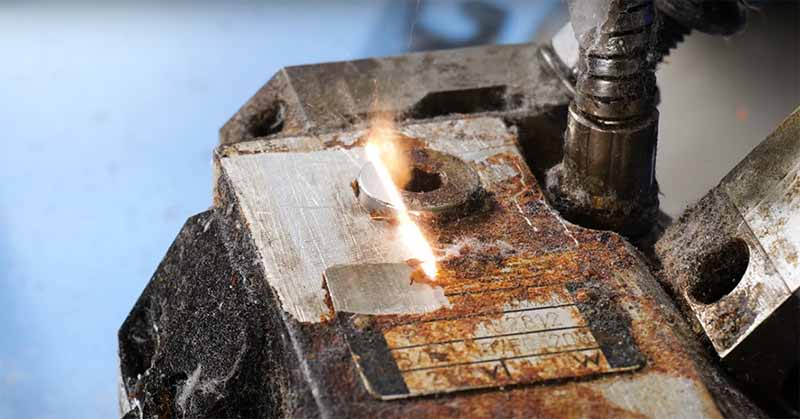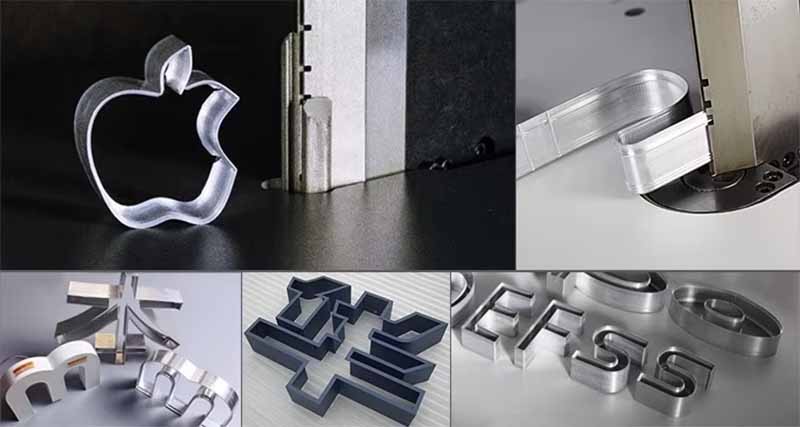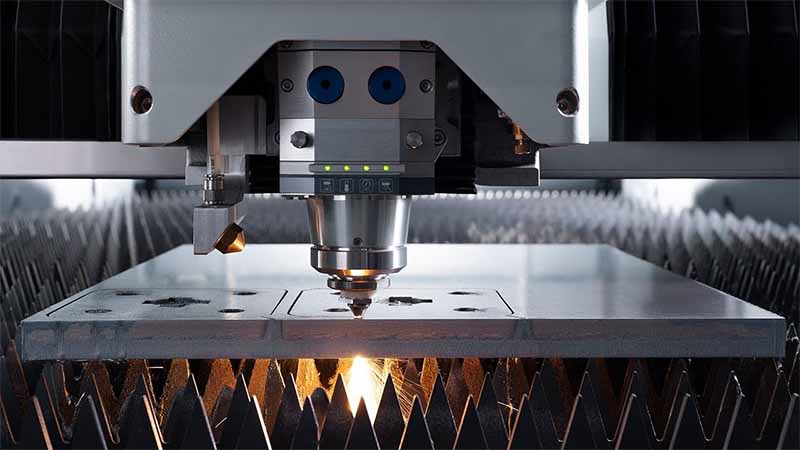In the field of cultural heritage protection and architectural conservation, a professional laser cleaning machine for restoration has become an essential tool. Laser cleaning provides a non-contact, precise, and environmentally friendly solution to remove dirt, oxidation, and surface contaminants from historical artifacts and building materials.
Developed in recent years as an advanced technology, laser cleaning plays a vital role in the preservation of historical buildings. It enables the precise removal of pollutants, corrosion, and deposits from a wide range of materials, including stone (such as marble and jade), metals (such as bronze and iron), ceramics, wood, and paper-based artifacts.
What is Laser Cleaning for Historical Artifact Restoration?
Laser cleaning is a precise and non-contact method used to restore historical buildings and artifacts. It works by scanning the target surface with ultra-short laser pulses, causing rust, paint, grease, carbon deposits, and oxide layers containing organic or inorganic impurities to rapidly vaporize. This process removes contaminants with high precision while leaving the underlying material completely unharmed. Laser cleaning can also treat colored or pigmented surfaces delicately, eliminating accumulated soot and unsightly dirt to restore their original appearance. Cleaning parameters, including laser power (0–100%) and pulse settings, can be finely adjusted for optimal results.
Using this non-destructive approach, laser cleaning effectively removes dirt, oxides, and inappropriate restoration layers from stone carvings, metal artifacts, and ancient building surfaces, maximizing the preservation of their historical features. Additionally, it is an environmentally friendly technique that requires no chemical agents and generates no secondary pollutants, runoff, or residue, making it an ideal alternative to conventional cleaning methods.
Historical buildings, exposed to different environmental conditions over long periods, often develop various contaminants and deposits on their fragile or sensitive surfaces, including soil stains, rust, grease, water marks, and sweat traces. These deposits not only diminish the aesthetic value of heritage objects but can also accelerate material deterioration. Laser cleaning provides an ideal solution for safely removing paints, varnishes, and surface stains without causing any damage.
As a modern conservation and restoration technology, laser cleaning has been widely adopted worldwide. It has accumulated numerous successful applications in cleaning and restoring ancient building facades, stone sculptures, murals, and various heritage components. These practices not only demonstrate the technique’s safety and effectiveness but also highlight its significant potential in the field of cultural heritage preservation.
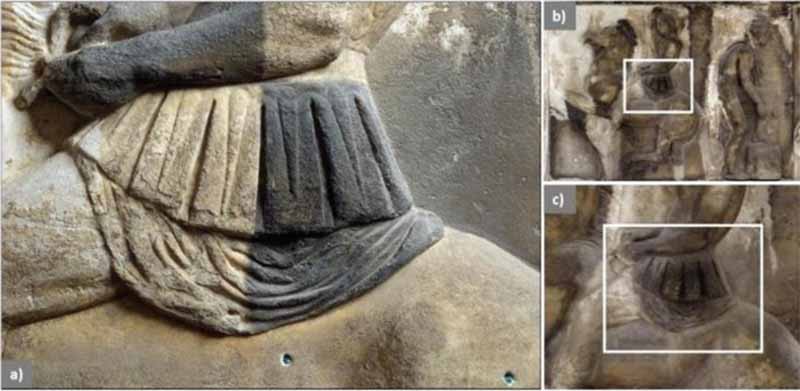
Why Choose Laser Cleaning Machine for Historical Buildings
Precise Selectivity
By adjusting laser parameters, laser cleaning can target the specific absorption characteristics of different materials and contaminants. This allows for the fine removal of surface pollutants while maximizing the preservation of the original artifact.
Precision Control and Safety
Laser cleaning systems feature precise energy control and positioning capabilities, making them particularly suitable for complex shapes or delicate surfaces.
Non-Destructive to Substrates
Through accurate energy management and selective removal, lasers act only on the target contaminants, avoiding thermal or mechanical damage to sensitive materials such as metals, stones, composites, or heritage artifacts. This ensures the integrity of the underlying substrate.
High Efficiency and Flexibility
Laser cleaning is fast and can be easily integrated with automated systems, such as robotic arms, making it ideal for cleaning complex surfaces or for in-line processing. It reduces consumable use and waste disposal costs, offering significant overall economic benefits.
Ease of Operation
Handheld laser cleaning devices are both portable and mountable, capable of reaching areas difficult to access with traditional methods. They are easy to operate, require minimal maintenance, and provide reliable, practical performance.
Outstanding Results
Laser cleaning produces highly clean surfaces with no residue and can even activate the surface to facilitate subsequent processes such as welding, coating, or bonding, significantly improving product quality and reliability.
Eco-Friendly
The process completely eliminates the need for chemical cleaners or abrasive media (such as sand), producing no wastewater, exhaust, or solid waste. It meets the strictest environmental standards and regulations.
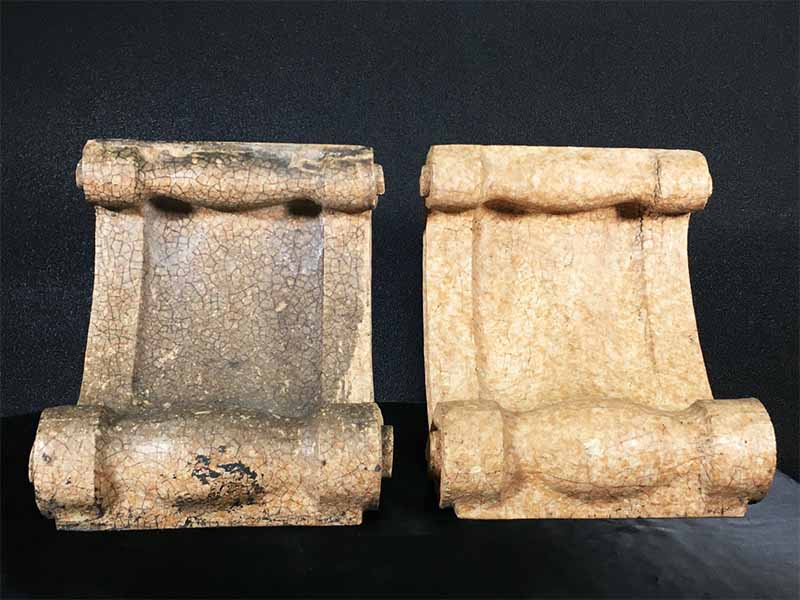
Applications of Pulsed Laser Cleaning Machine for Restoration
1. Surface Contaminant Removal
During long-term storage or display, artifacts often accumulate dust, grease, mold, and other surface contaminants. These not only affect visual appearance but can also compromise preservation. Pulsed laser cleaning allows precise removal of these impurities by controlling beam energy and exposure time, restoring the artifact’s original surface.
2. Corrosion Layer Cleaning
Artifacts exposed to air over extended periods often develop oxide layers, salt deposits, or rust. Laser cleaning can selectively remove these corrosion layers, preventing further damage and slowing the deterioration process.
3. Fine Restoration
In addition to cleaning, laser technology can perform delicate restoration tasks. It can help repair minor cracks or restore the integrity of decorative patterns. By precisely adjusting the laser beam, “micro-processing” can be performed on very small areas, enhancing both the artifact’s completeness and aesthetic appeal.
4. Preservation of Authenticity
Compared with traditional cleaning methods, laser cleaning offers high precision and controllability. It requires no chemical agents or abrasive materials, avoiding secondary damage and better preserving the historical information and original appearance of the artifact.
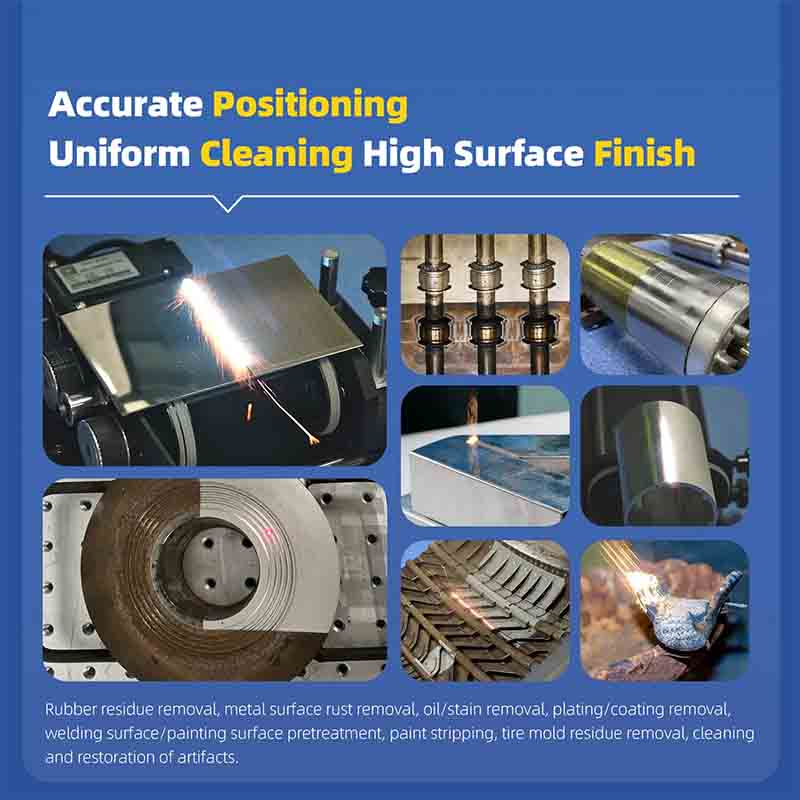
The Future of Laser Cleaning for Cultural Relics Protection
In practice, several historical buildings in Europe, including ancient castles and Gothic cathedrals, have successfully employed laser technology to remove graffiti and surface deposits, restoring their original historical appearance. These cases demonstrate the efficiency and safety of pulsed laser cleaning machine handles complex structures and sensitive surfaces, offering a novel solution for heritage conservation and architectural restoration.
However, some challenges remain. Certain materials or stubborn deposits require precise adjustment of laser parameters—such as wavelength, energy density, and pulse duration—to achieve optimal cleaning results. Additionally, real-time monitoring during cleaning (e.g., spectral analysis, microscopic inspection) and subsequent protective maintenance are crucial to ensure the effectiveness of the cleaning process and the long-term preservation of artifacts.
Future Applications
With the ongoing miniaturization and smart technology integration of laser cleaning equipment, coupled with gradually decreasing costs, the technology shows promising potential across multiple fields:
Cultural Heritage Conservation: Providing precise, non-destructive cleaning for stone sculptures, murals, bronzes, ceramics, and other artifacts.
Architectural Cleaning: Effectively restoring facades, decorative elements, and surfaces of historical buildings and public facilities.
Graffiti Removal: Offering an eco-friendly and efficient solution for urban management.
Industrial Expansion: Potential applications in aerospace, shipbuilding, and rail transport for surface cleaning and maintenance.
Despite its numerous advantages, laser cleaning still faces practical challenges. A primary limiting factor is cost: pulsed laser cleaning systems remain relatively expensive, which restricts wider adoption in some sectors.
The Best Laser Cleaning Machine for Restoration
The backpack pulsed laser cleaning machine uses pulsed lasers to heat and irradiate the surface of an object, causing contaminants to evaporate or sublimate. This portable, handheld laser cleaning solution weighs less than 10 kg, featuring a compact and lightweight design that can be carried on the back. With a telescopic handle and wheels, it is easy to transport and maneuver. It can also be connected to an external mobile power supply, making it ideal for outdoor operations with flexible, unrestricted use.
Pulsed laser cleaning machines are the optimal choice for artifact restoration. Unlike continuous lasers, pulsed lasers emit short bursts of energy, minimizing thermal impact on the substrate. This ensures safer cleaning while preserving the original condition of delicate artifacts.
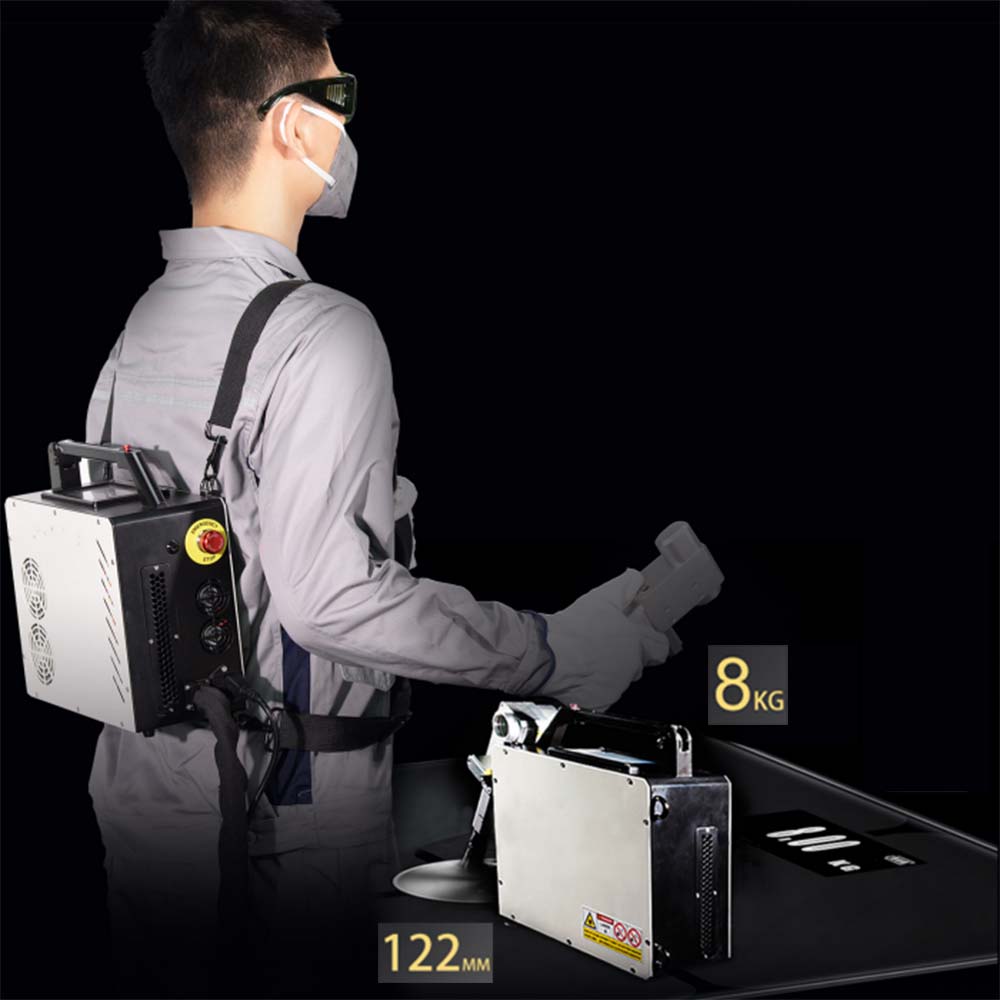
Key Features
Lightweight and Flexible: Backpack design allows easy portability and on-site operation, suitable for indoor, outdoor, and complex environments.
Easy to Operate: Simply connect the power supply and start the device—no additional chemicals, abrasives, or water required.
Auto-Focusing: Automatically adjusts focal length to adapt to various surfaces, especially irregular or intricate components.
High-Efficiency Cleaning: Rapidly removes resin, grease, rust, coatings, plating, paint, and other contaminants, leaving surfaces exceptionally clean.
Eco-Friendly: The cleaning process generates no dust, wastewater, or residue, ensuring safety for operators and the environment.
Applications
Metal Protection: Rust and surface cleaning for equipment, pipes, and steel structures.
Cultural Heritage & Architecture: Ideal for cleaning stone, bronze artifacts, and historical building surfaces.
Transportation: Coating removal and maintenance for railways, automobiles, and ships.
Industrial Manufacturing: Surface cleaning and reprocessing for molds and components.
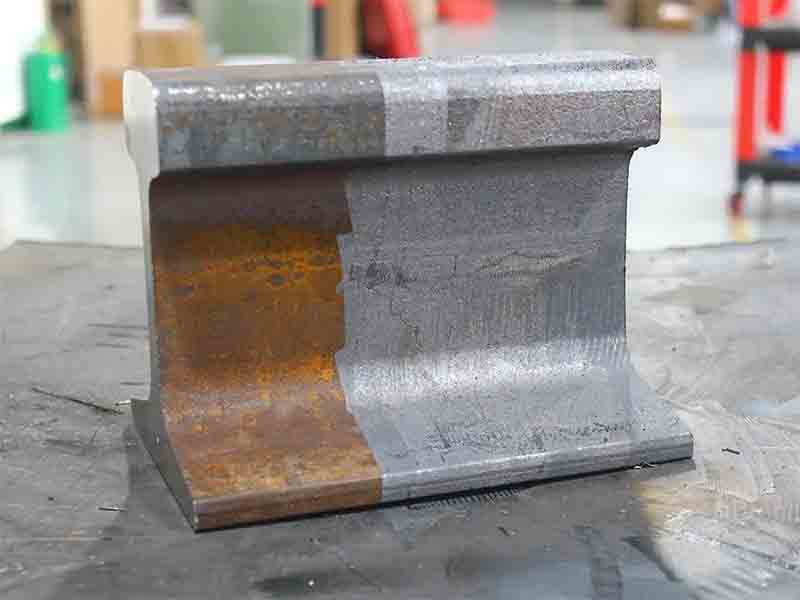
Why Choose DPLASER Professional Laser Cleaning Machine for Restoration
DPLASER laser cleaning machines are CE and FDA certified. We offer sample testing, ODM customization, remote guidance, and lifetime after-sales support.
We are Laser Cleaning Machines Manufacturer
As a pioneer in laser equipment in China, we focus on the research, development, and production of laser cleaning machines. Our devices are now exported to multiple countries and regions worldwide. With stable performance and reliable quality, DPLASER has earned the trust of international clients.
100% Quality Assurance
We select components from world-class suppliers and combine them with our own innovative technologies. Every machine undergoes rigorous testing before leaving the factory to ensure stability and durability.
Pre-Delivery Testing
Before delivery, we provide customers with trial and testing services. Machines can be demonstrated in our factory or sent to the customer’s site for verification under real working conditions, giving clients peace of mind.
Comprehensive Service Package
We offer more than high-quality equipment. Our complete service package covers the entire process: from preliminary testing and solution design, to equipment installation, operator training, and ongoing maintenance and technical support—ensuring an optimal user experience and protecting your investment.
In summary, for precision instrument repair, restoration studios, cultural relics and historical buildings, a pulsed laser cleaning machine for restoration offers super precision, gentle and efficient. Its ability to remove corrosion, dirt, and oxidation without harming the original material ensures both safety and efficiency. Contact us today to learn how this advanced technology can elevate your restoration projects and protect cultural treasures.

